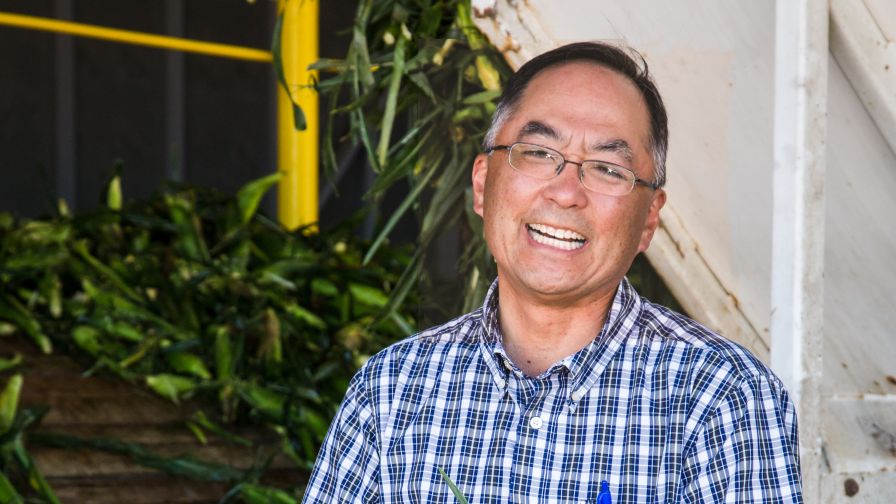Robert Sakata Talks About Water

With unpredictable weather patterns, water management can change from a vital skill to one that a grower doesn’t think about until the next drought or flood. But one thing that’s highly predicable? Growers will sooner or later have to deal with water issues.
With that in mind, American Vegetable Grower® reached out to Robert Sakata, President of Sakata Farms. The operation is always vulnerable to water shortages, since it is down river from Denver. And consumer access to water in the river trumps down-river growers.
American Vegetable Grower (AVG): What is a technique you developed to keep your crops alive while you dealt with severe water and/or labor pressures?
Robert Sakata: I didn’t develop it, but I patterned it after what my father did, and that is pray!
But also, the main adaptive management strategy that we have adopted is crop planning. In the past, our focus was really only on rotation as a best management practice for crop health. But now, water availability plays a big role in what mix of crops go on each piece of ground.
Each of our many farms have unique water sources, and those fields in each farm are balanced to minimize the risk of loss if water becomes short. For example, a farm with a very senior water right will be planted with the higher-value crops, while a farm with more junior water rights may have a mix of higher value crops and more drought-tolerant crops like feed barley or winter wheat. This evaluation is done taking into consideration the snowpack in the Rocky Mountains, because this is the major source of our surface water supply.
AVG: Is it something you will be doing from now on, or was it an emergency-only practice?
Sakata: This is a normal practice for us now.
AVG: What are the greatest water management or irrigation challenges you think you’ll be facing in the couple of years?
Sakata: Being just downstream of Denver, the demand for water for municipal and industrial growth is tremendous. The Colorado Water Plan estimates that more than 500,000 acres of irrigated farmland in Colorado could be dried up by 2050 as water moves to urban development. Even if we try to keep farming, as agricultural water is moved out of the area, it will be challenging to keep the water we have a right to use moving through the system.
Also, net yields on our water rights are decreasing over time as water becomes even more over appropriated. Water is now too expensive for farmers to buy in our area, so we will have to continue to adapt our management, to do what us farmers have done for ages and that is do more with less.
AVG: What other water issues are Colorado growers dealing with?
Sakata: Our irrigation canal company just invested $2.1 million to upgrade the diversion structure off of the S. Platte River. It is supposed to be all automated now, included a trash-cleaning system because we are getting lots of debris coming downstream. We don’t have it perfected yet, but it’s another cost of business in this water-short environment that we live in.
Something else that we are looking at is having water be like a crop for us. In Colorado, efforts have been made to allow for agricultural water rights to be temporarily used for municipal and industrial (M&I) uses in drought years when cities may run short of water. If we can do that, we can market our right to use water that year instead of trying to grow a crop.
Currently, there are still a lot of challenges with this concept, but many of us feel this is a way to keep water rights in the hands of farmers and still meet the variable needs of M&I uses during drought conditions. So, our tool could be a pen, and who know maybe the new slogan will be the pen is mightier (more profitable) than a shovel!










